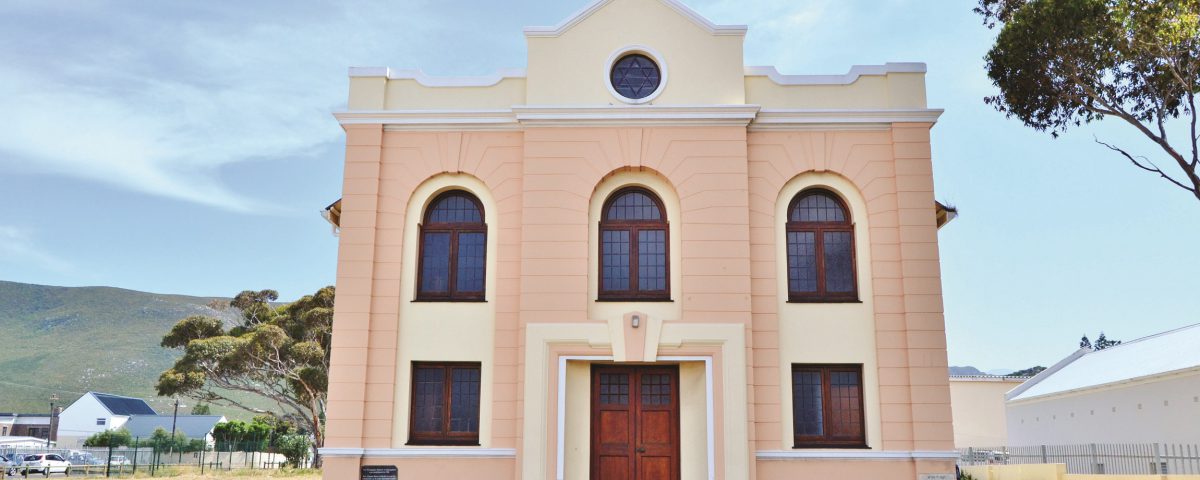Grave Encounters: What is so fascinating about the burial grounds of Green Point, Cape Town?
November 19, 2018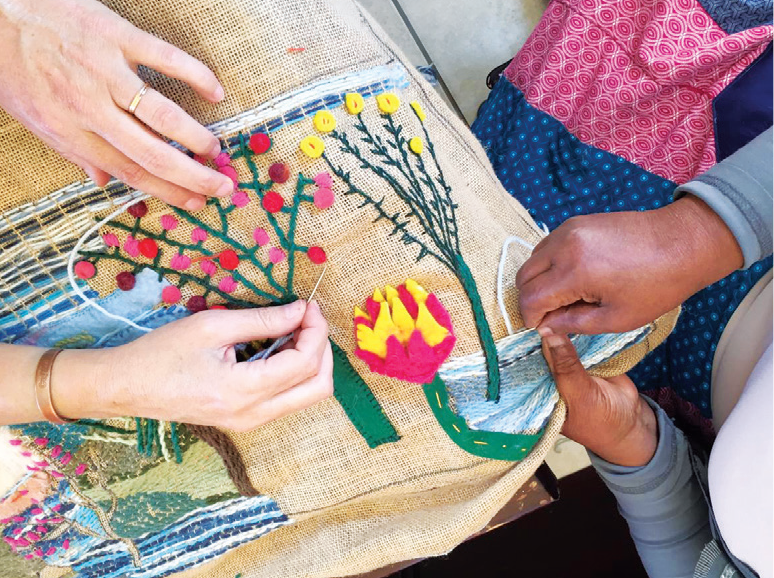
Stitching communities together – A Hermanus History Society Project
December 27, 2018Writer
Elaine Davie
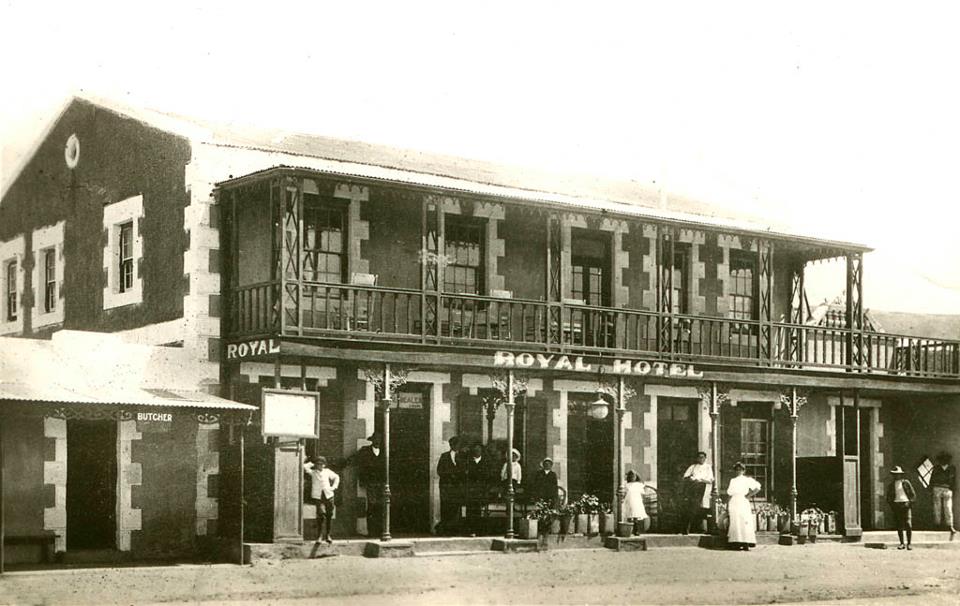
ROYAL HOTEL
It’s a well-known fact that the Jewish community has made a contribution to the overall development of South Africa way beyond its relatively small size. Jewish men and women have led the way in business, the professions, the arts and politics. This is true, too, of Hermanus, which, unlike many other small towns in South Africa, is privileged still to be home to a small, but fully-functioning Jewish community.
From today’s perspective, it is difficult to imagine what this area must have looked like in the 1820s when Hermanus Pieters grazed his sheep and gave his name to the village, Hermanuspietersfontein, which sprang up around the safe inlet we now call the Old Harbour when fisher folk settled there in 1855. In those pioneering days, this settlement was largely populated by Afrikaans-speaking coloured and white people, with a scattering of Koi, but then, in about 1895, the first Jewish family put down roots here. Originally from Vilna, Lithuania, Adel and Dorah Allengensky (later shortened to Allen) and their son David arrived in the little village and decided it would be a good place to set up shop. By that time, it must already have grown quite considerably, because this entrepreneurial family established not only a thriving fishing enterprise, but also the Royal Hotel and the first cinema in Hermanus, the Adelphi.
In order to conduct their fishing business, they built a ‘vishuis’ (fish house) in the Old Harbour which in 1970 was declared a national monument and since 1972, has housed the Old Harbour Museum. Indeed, the museum director’s offices are a replica of the Allengensky’s original vishuis. Quite soon after they had settled in the village, they were joined by a steady flow of other Jewish families. Eventually, there were enough of them to warrant the establishment of a kosher butchery by one Isaac Melnick, who was also a fishmonger. He was to serve as President of the local Hebrew congregation for 40 years.
Visbaai, later known as the Old Harbour, around 1930.
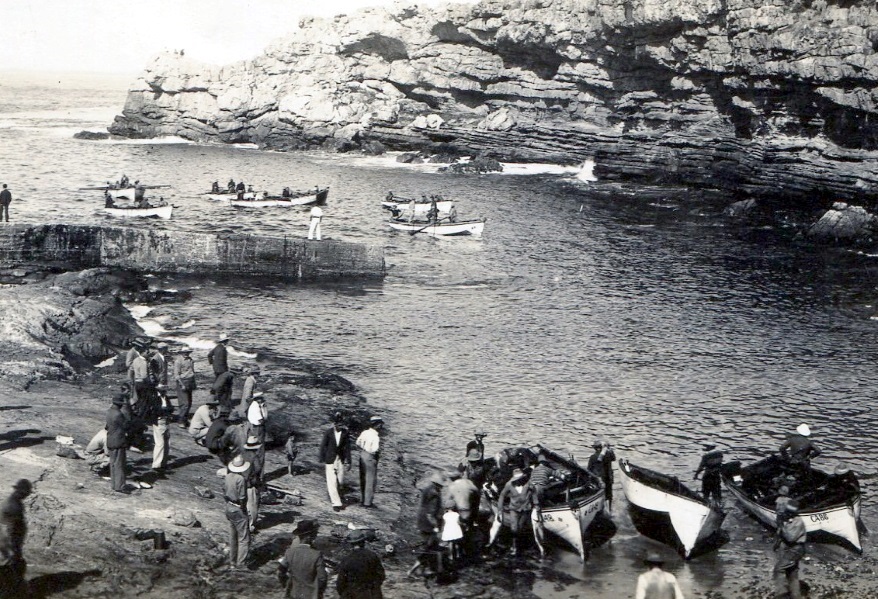
OLD HARBOUR
Most of these families came from the shtetls and towns of Eastern Europe and Russia. They were anything but wealthy and when they arrived, spoke neither English nor Afrikaans. What they did have was their religion and a strong sense of family and cultural identity. They were also no strangers to hard work and the parents had a burning desire to see their children get a good education and succeed in life.
Despite being a tight-knit community amongst themselves, they were anxious to become an accepted component of the wider population. They introduced an exoticism and culture new to the Hermanus community, but in their strict adherence to the Bible of the Old Testament, they found they shared a strong bond and developed a spirit of mutual respect.
The first Jewish wedding in Hermanus took place in 1904, the same year that the town achieved municipal status. Morris Silke, a local tailor and shopkeeper, and Lena Stockman were the happy couple and their reception took place at Allengensky’s Royal Hotel. Also in 1904, the first Jewish cemetery was consecrated on the slopes of Hoy’s Koppie. Although services were still conducted in people’s homes, in 1922 Rev Falkoff was engaged as the congregation’s first minister. By this time, holiday-makers, including Jewish families, had begun to stream to Hermanus in the summer and it was decided that the congregation should have a proper place of worship for the permanent residents as well as the visitors. Thus, in 1925 they purchased Lot No 1 in the Main Road from the municipality for £10, and £127 was raised to build the first synagogue. The opening ceremony took place amid great excitement in 1930.
The first Jewish wedding in Hermanus took place in 1904, the same year that the town achieved municipal status. The happy couple’s reception was held at Allengensky’s Royal Hotel. The hotel, which was located on Main Road across from Market Square, burned down in a fire in 1981.
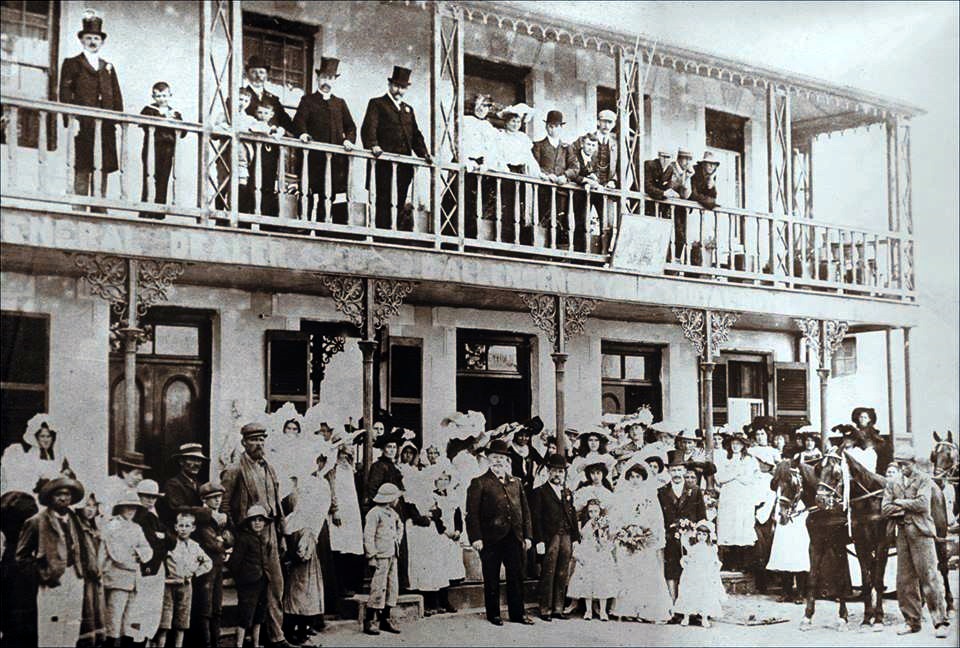
JEWISH WEDDING PARTY
This beautiful old building, now a National Monument, still stands, somewhat forlornly, at the entrance to the town, waiting for a new owner to bring it to life once again. The Jewish population of Hermanus reached its peak in about 1943, but after that began a steady decline as the original pioneers passed away and their children moved to larger cities or emigrated. By 1968, it consisted of only about 10 or 12 members who found it difficult to maintain the building.
By 1990 both the Jewish cemetery and the shul had fallen into a state of total dilapidation and disrepair, but in 1996 a group of Capetonians who owned holiday houses in Hermanus decided to revive the Hermanus synagogue and a number of ex-residents oversaw its refurbishment, both inside and out. The rededication of the synagogue was conducted by Rabbi Moshe Silberhaft in December 1997 during the Chanukah festival. In September 2000, for the first time in 27 years, a barmitzvah was celebrated there.
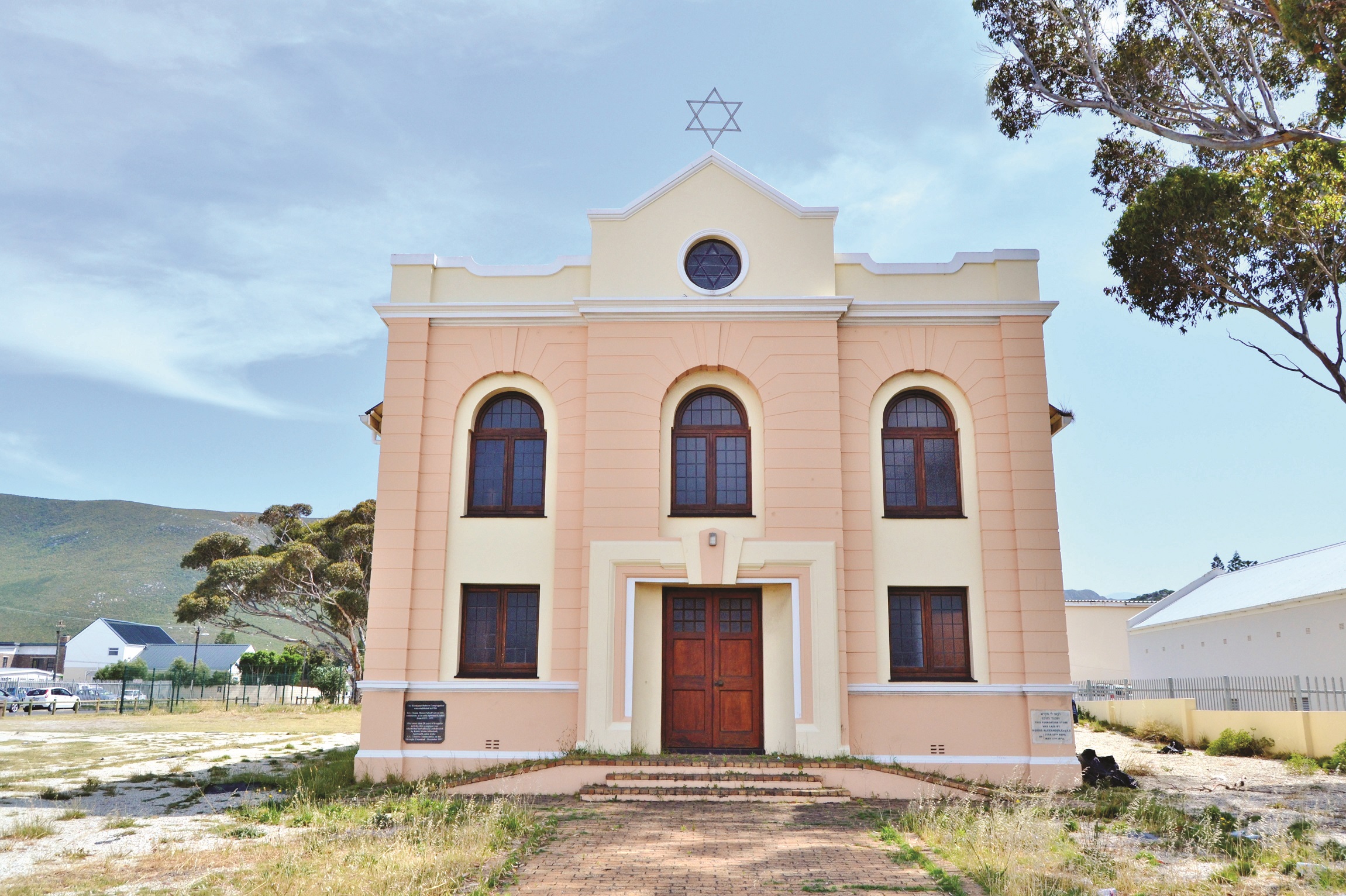
COLOUR PHOTO OF SYNAGOGUE: Taylum Meyer
The cemetery, too, was given a major facelift; at the time, it contained 45 graves, some unmarked. Despite these efforts, the writing was on the wall: the location of the synagogue was no longer ideal and its facilities were extremely limited. So with great sadness the decision was taken in 2006 to sell it and build a complex on land purchased from the municipality near Hermanus High School. This not only included a smaller shul, but also a multi-purpose hall and a Rabbi’s house, amongst others. Through the years the Jewish community has played an important role in growing the economy of Hermanus, at first, largely as general dealers and hotel owners (nine hotels in the greater Overstrand region were owned at one time or another by 14 different Jewish families), but later they played their role in all sectors of the town’s professional and commercial life, including the Magnetic Observatory (now the South African Space Agency) and the fishing industry.
Apart from owning a flourishing hardware, haberdashery and clothing business on Oblowitz Corner (now Lemm’s Corner), pioneer Jacob Oblowitz, the ultimate multi-tasker, was also a banker, barber and owner of an informal bioscope above his shop, complete with a pianola to accompany the silent films.
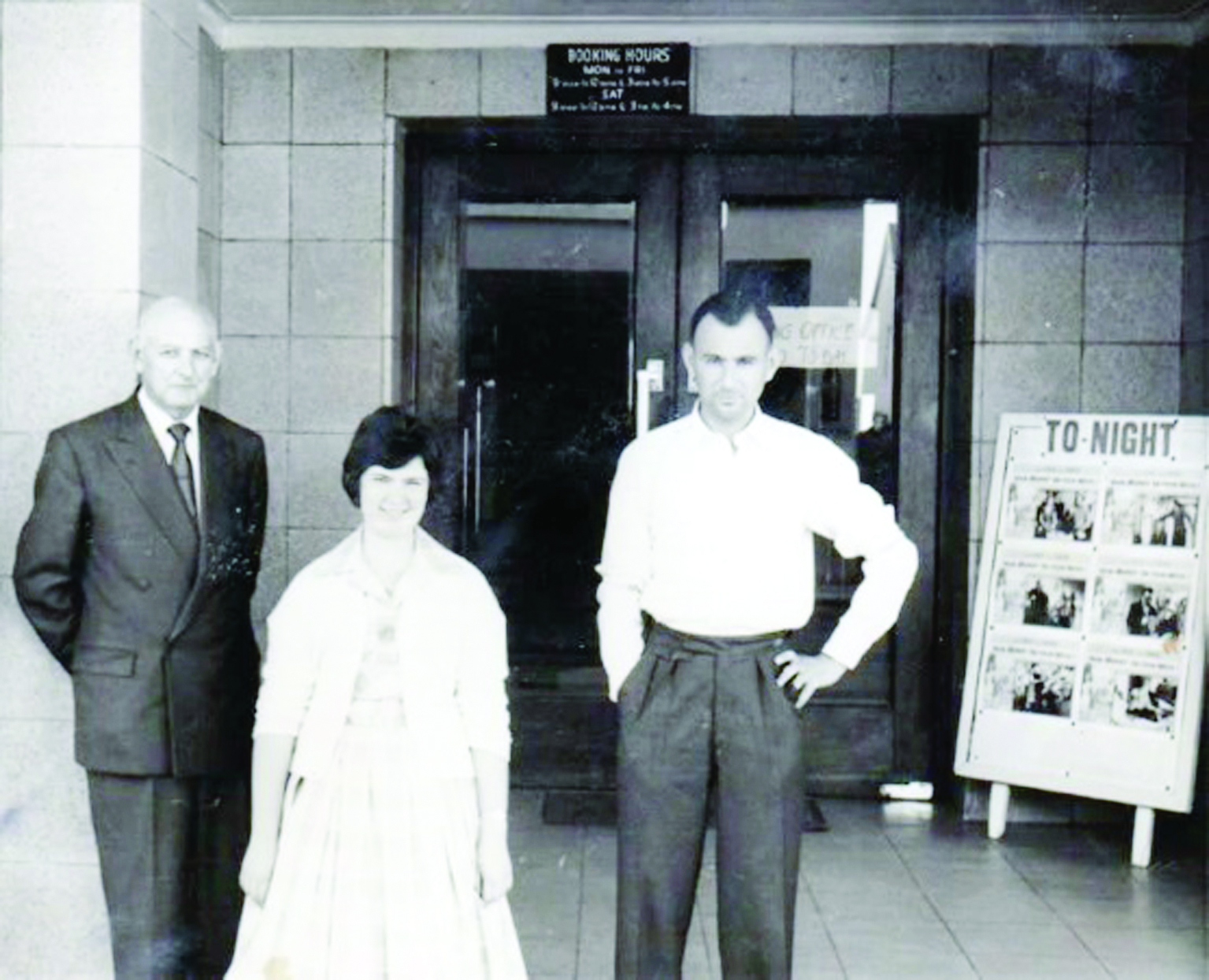
THE ADELPHI CINEMA
Financier and industrialist, Julius Abrahams was a pioneer in the abalone industry and was amongst the first to export the product to the Far East. Many other Hermanus Jews played prominent roles on the South African and international stage, such as Dr Aubrey Silke, who was to become one of this country’s top tax specialists; for many years his books were considered the definitive authority on the subject.
A number of these Hermanus citizens also devoted themselves to supporting charitable organisations in the town. Two generous members of the community, the afore-mentioned Julius Abrahams and Shlomo Peer helped numerous Hermanus students with bursaries – on condition that the donors remained anonymous during their lifetimes.
In more recent times, the couple who focused attention on Hermanus more than any other was the late Chief Rabbi Emeritus of South Africa, Cyril Harris and his wife Ann who retired to the town in 2004, the Rabbi passing away here a year later. Both were co-founders of the influential educational NGO, Afrika Tikkun and Mrs Harris also actively involved herself in local community empowerment projects.
Rabbi Harris played a prominent role in South Africa’s transition to democracy and when he died, President Nelson Mandela paid tribute to him: “He was a spiritual leader, a man of exceptional humaneness, one who has made his mark in the social transformation of South Africa. And in African fashion we say Hamba Kahle, Cyril.” And so we, too, pay tribute to the unique contribution the Jewish community has made to our town and its people. We lift our glasses and say “L’chaim! To life! Small though your numbers may be now, long may you continue to enrich the life of our community.”
The author is indebted to Rabbi Moshe Silberhaft of the Jewish Board of Deputies – ‘the Travelling Rabbi’ – for his assistance with the research for this article, as well as to Dr Robin Lee of the Hermanus History Society and Mr Dave Rade of the Hermanus Hebrew Congregation.

